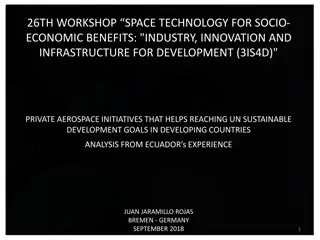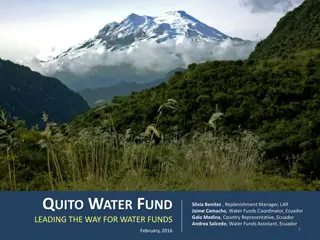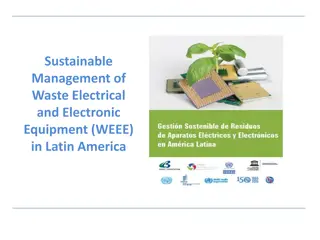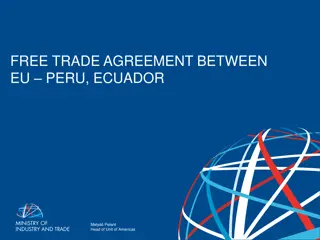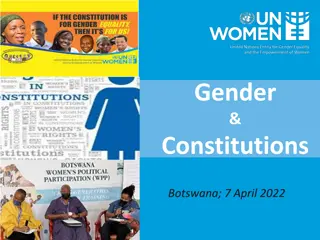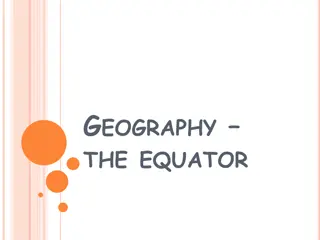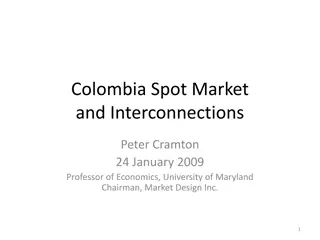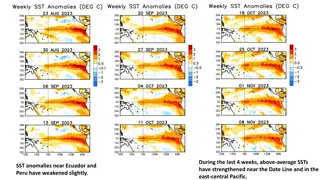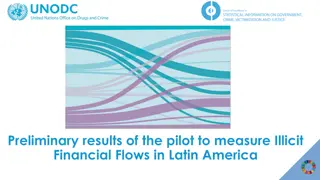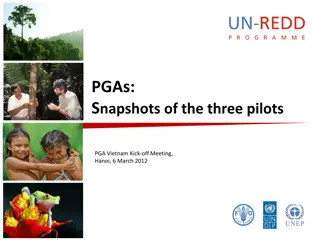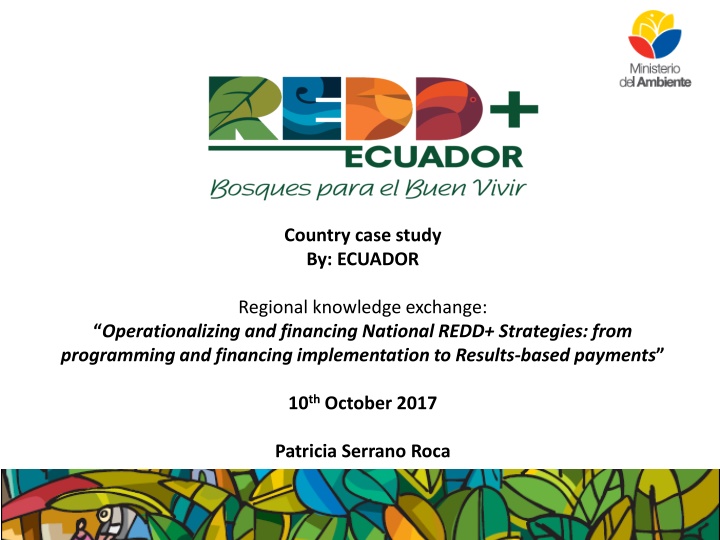
Operationalizing and Financing Ecuador's National REDD+ Strategies
Ecuador has made significant progress in implementing its REDD+ Action Plan, with successful evaluations by UNFCCC. The country has established key systems like the National Forest Monitoring System and Safeguard Information System. Net deforestation rates have decreased over the years, and Ecuador aims to address deforestation through its REDD+ Action Plan Forest for Good Living. The plan focuses on transitioning towards sustainable production and includes strategic and operational components for sustainable forest management and conservation.
Download Presentation

Please find below an Image/Link to download the presentation.
The content on the website is provided AS IS for your information and personal use only. It may not be sold, licensed, or shared on other websites without obtaining consent from the author. If you encounter any issues during the download, it is possible that the publisher has removed the file from their server.
You are allowed to download the files provided on this website for personal or commercial use, subject to the condition that they are used lawfully. All files are the property of their respective owners.
The content on the website is provided AS IS for your information and personal use only. It may not be sold, licensed, or shared on other websites without obtaining consent from the author.
E N D
Presentation Transcript
Country case study By: ECUADOR Regional knowledge exchange: Operationalizing and financing National REDD+ Strategies: from programming and financing implementation to Results-based payments 10thOctober 2017 Patricia Serrano Roca
Ecuador progress through REDD+ National Strategy or Action Plan REDD+ Action Plan developed and issued by ministerial decree National Approach National Forest Reference Emissions Level (NFREL) Activity: Deforestation National approach Succesfully evaluated by UNFCCC on october, 2015 National Forest Monitoring System (NFMS) MRV proceses strenghtened Institutionality and proceses stablished Safeguard Information System (SIS) SIS proceses identified and stablished First Summary of Information (SoI) presented to UNFCCC on march, 2017 with a national approach
Net Deforestation in Ecuador for periods: 1990-2000; 2000-2008 Y 2008-2014 Average rate per period: PERIOD 1990 - 2000 - 0,65 % 5.476 Esmeraldas 74 Carchi 246 Imbabura 5.416 Sucumb os Deforestaci n neta anual 92.742ha/a o 408 Pichincha 679 Santo Domingo 1.411 Manab 599 Napo 3.087 Orellana 1.619 Cotopaxi PERIOD 2000 - 2008 - 0,58 % 487 Tungurahua 395 Los R os 2.939 Bol var 2.846 Pastaza 42 -90 Santa Elena Deforestaci n neta anual 77.748ha/a o Chimborazo 2.570 Guayas 7.925 Morona Santiago 365 Ca ar TOTAL 1.309 Azuay Deforestaci n neta anual promedio PERIOD 2008 - 2014 - 0,37 % 47.497 hect reas por a o 6.274 El Oro 1.277 Zamora Chinchipe 1.815 Loja Deforestaci n neta anual 47.497ha/a o
Percentage of area under different land uses from deforested area between 2008 and 2014
2017-10-08 PPT 3_ Ecuador To address deforestation and contribute to the transition towards sustainable production, among other objectives, Ecuador has developed the REDD+ Action Plan Forest for Good Living (2016-2025) Some elements of a Strategy and some of an Action Plan Political document with some operational aspect Period: 2016-2025 It has 4 Strategic and 5 crosscutting Operational Components Transition to sustainable and deforestation- free productive systems crosscutting Operational Components Policies and institutional management Sustainable forest management Conservation and restoration
How will the REDD+ AP be implemented? Set of measures and actions Linked to national agendas and sectoral policies Addressing drivers of deforestation both inside and outside the forested areas. The measures and actions to address deforestation and forest degradation are linked to land use changes and productive development. Technical & Participative construction Collaborative construction with implementation partners Sectoral Implementation Plans Activities in detail Geographic scope Strategic partners Beneficiaries Institutional arrangements Schedules Budgets Financial mechanisms Strategic Components Policies & Measures Operational Components GCF Project: Priming financial and land use planning instruments to RED
Sectoral Plans REDD+ Implementation Plans 1/2 Sectors / Themes Implementing Partners Land Use planning Instruments Nathional planification authority, local governments, Indigenuos people, communitties Conservation, restoration, reforestation and products from biodyversity Socio Bosque Programe Agroforestry systems with cocoa, coffee and sustainable livestock Ministry of Agriculture & Livestock Traceability, deforestation free certifications and responsible procurement for deforestation free agricultural products (commoditties) Ministry of Agriculture & Livestock Ministry of Commerce and Foreign Affairs
Sectoral Plans REDD+ Implementation Plans 2/2 Sectors / Themes Implementing Partners Traceability, deforestation free certifications and responsible procurement for deforestation free forest products (timber and non timer poducts) Ministry of Environment Undersecretariat of Natural Heritage National Forest Direction Sustainable & deforestaction free palm oil Ministry of Agriculture & Livestock
Investment REDD+ National AP & other Warsaw framework requirements- ready REDD+ Implementation plans & REDD+ financial strategy - ready GCF project starting its implementation Additional financing mobilization: (preparation of proposals, design of a funding mechanism)


